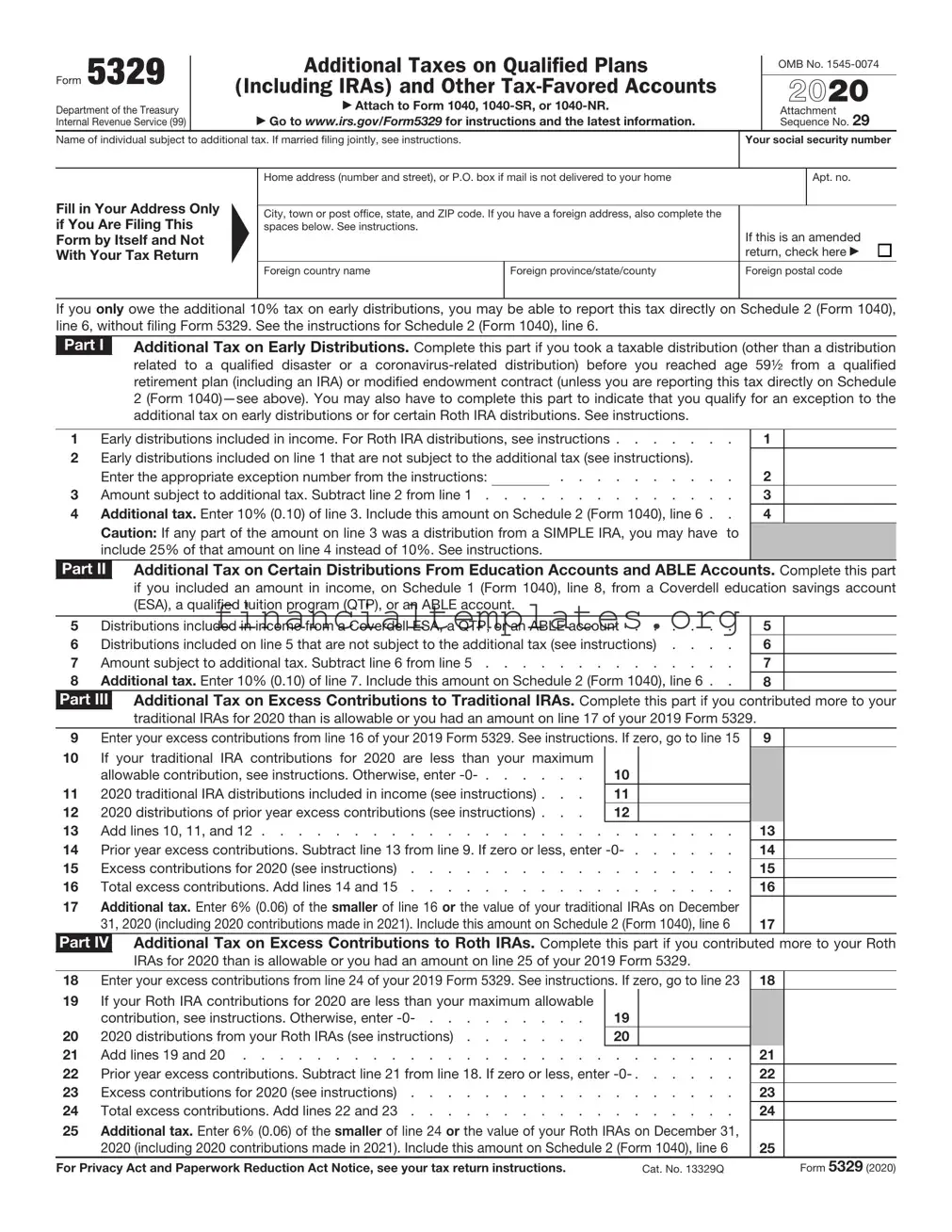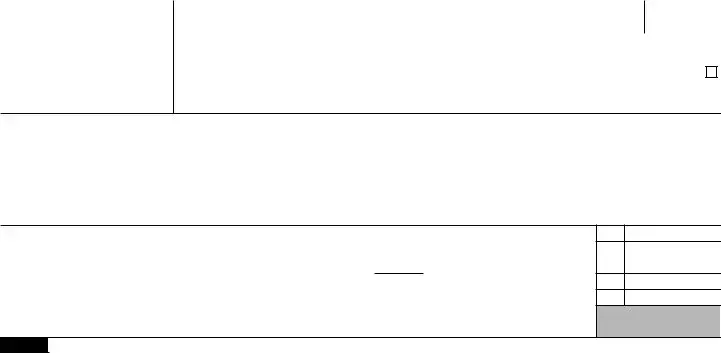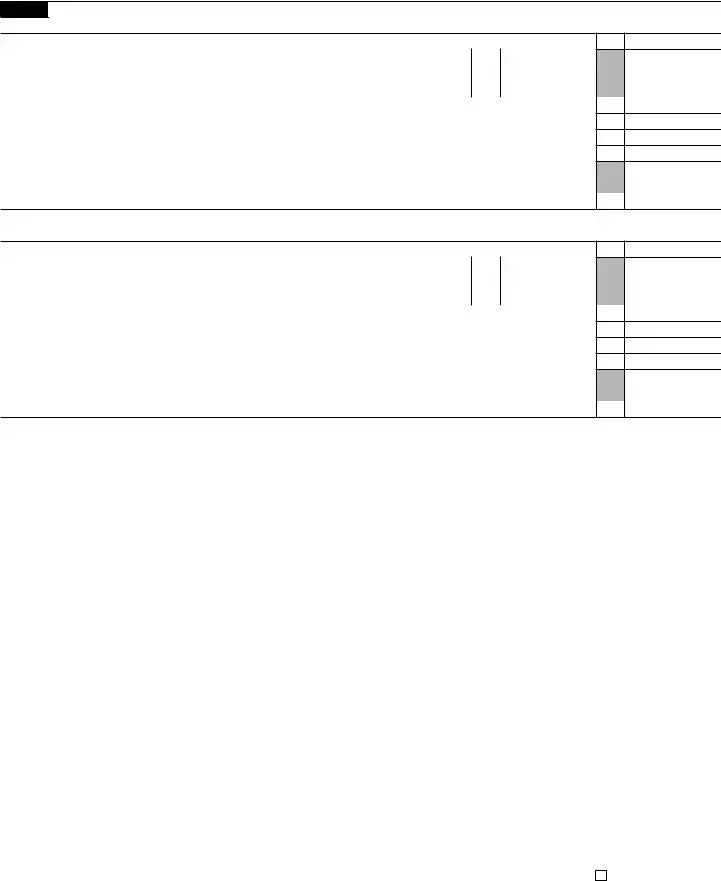The IRS Form 5329 is a document used for reporting additional taxes on IRAs and other tax-favored accounts. Its complexity often leads to a variety of questions. Below, find detailed answers to some of the most commonly asked questions regarding Form 5329.
- What is the purpose of IRS Form 5329?
IRS Form 5329 serves several important functions. Primarily, it is used to report additional taxes on IRAs, Coverdell ESAs, HSAs, and Archer MSAs. These additional taxes can result from early withdrawals, excess contributions, or insufficient distributions. This form allows taxpayers to calculate and report these taxes to the IRS, ensuring compliance with tax laws related to retirement and savings accounts.
- Who needs to file Form 5329?
Any individual who has incurred additional taxes due to certain activities within their tax-favored accounts must file Form 5329. This includes, but is not limited to, individuals who have made early withdrawals from retirement accounts before reaching the age of 59 ½, exceeded the allowable contribution limits, or failed to take required minimum distributions upon reaching the necessary age. Individuals who find themselves in these situations are required to calculate and report the additional taxes owed using Form 5329.
- Can Form 5329 be filed independently?
Yes, Form 5329 can be filed separately from your standard tax return. While it is often submitted alongside Form 1040, the IRS allows for the independent filing of Form 5329 in situations where taxpayers need to pay additional taxes or claim refunds for overpaid taxes related to their retirement or savings accounts. It is important, however, to ensure that all relevant tax forms are correctly filed and timely submitted to the IRS.
- What are the penalties for not filing Form 5329?
Failing to file Form 5329 can result in significant penalties. The IRS can impose additional taxes and penalties for underreported income due to excess contributions, early withdrawals, or late distributions not properly disclosed through Form 5329. It is crucial to accurately report all information to avoid potential financial penalties and ensure compliance with federal tax laws.
- How does one calculate additional taxes using Form 5329?
Calculating additional taxes using Form 5329 involves a clear understanding of the specific reasons these taxes are being assessed. For example, early withdrawal taxes are calculated as a percentage of the amount withdrawn before eligibility; excess contribution taxes are calculated based on the amount that exceeds the annual limit; and insufficient minimum distribution taxes are calculated using the difference between the amount that should have been distributed and what was actually distributed. The form provides detailed instructions for calculating these and other applicable taxes.
- Where can I find more information about Form 5329?
For more detailed instructions and the most current information regarding Form 5329, visiting the official IRS website is recommended. The IRS provides comprehensive guidance, including instructions for completing and filing the form, definitions of terms, and explanations of penalties. Additionally, tax professionals can offer personalized advice based on an individual's financial situation, ensuring accurate compliance with tax regulations.


